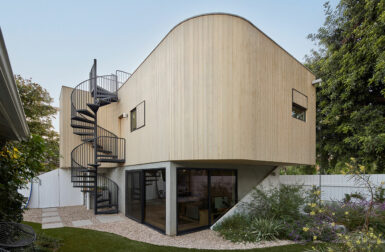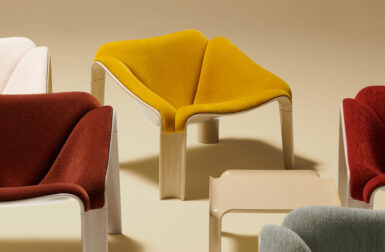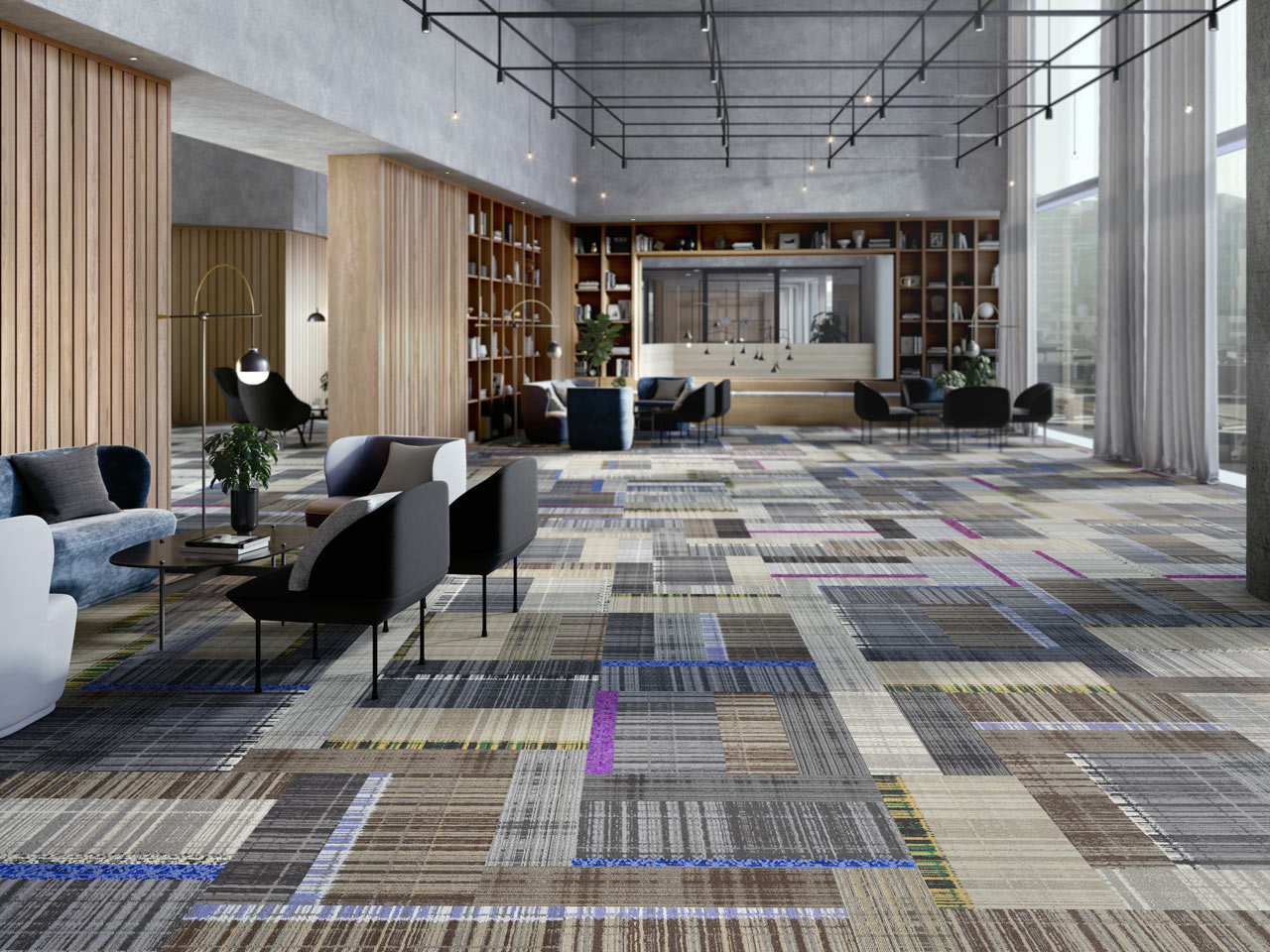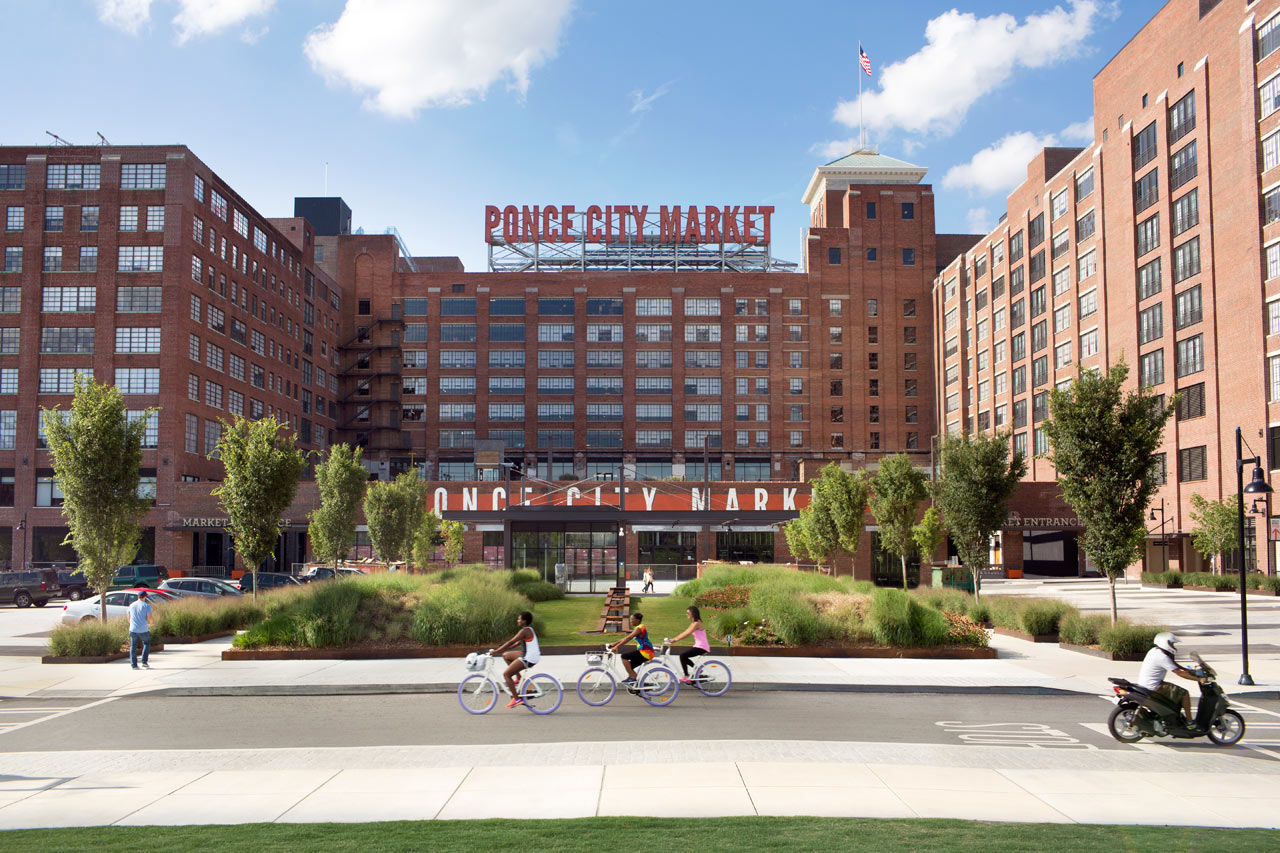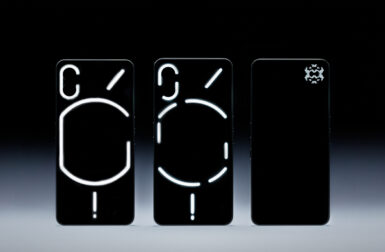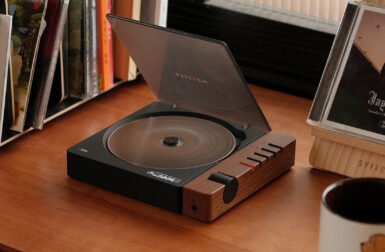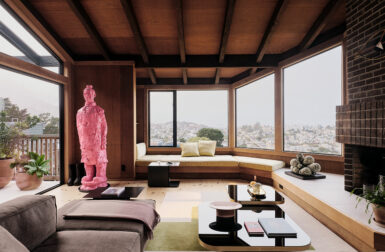Earlier this year on the Clever podcast, Amy and I had the pleasure of interviewing Chris Stulpin, Chief Creative Officer for Tarkett and Suzanne Tick of Suzanne Tick, Inc. about the concept of Neoculture, a term coined by Tarkett that refers to current cultural and societal shifts and how they impact architecture and interior design. It was such a fascinating conversation that I continue to think about it and still bring it up in conversations about the future of society and design.
Let me break Neoculture down for you to easily digest— attitudinal and societal shifts like population growth, increase in ridesharing, public transportation, and renting over owning, globalization over nationalization, sustainability, and reliance on technology are all contributing to Neoculture. The whole thing comes down to 4 Mega Trends:
- Mega Trend #1: Purpose Positive: retail is changing, stores are closing, so how can we reimagine vacant stores or old parking lots into new communities?
- Mega Trend #2: Sub-Urbanization: cities are becoming less affordable, so younger generations are spreading out, creating new communities, and “urbanizing” the suburbs.
- Mega Trend #3: Regenerative Generation: people are more aware of product lifecycle and where their things come from, so they’re buying locally sourced products, eating farm-to-table, and even renting items rather than buying to keep them in the lifecycle.
- Mega Trend #4: Future of Betterment: wellness has been the buzzword of 2017 and 2018 in architecture and interiors—consumers are also looking for integrated ways that their health can improve with things like sound, color and light.

S9 Architecture’s architectural transformation adapted Industry City’s buildings for contemporary reuse
That was Neoculture back in the Spring. However, I caught up with Chris Stulpin at Neocon, where he told me he’s been doing more research and has made some incredible new discoveries to add to the Neoculture conversation… so of course, I called him up to get the scoop. I wanted to know where Neoculture was going, but also gain better understanding of how these insights can inform design and product development. He began by explaining that Mega Trends can best be used as a map for architects and designers to see where the road ahead lies—what they’ll be spending their time on in the future. Instead of suburbs, which Chris says “don’t work for us anymore”, architects and designers will need to “meet a changing set of expectations, both in their physical location and the value they offer: ways to contribute to people’s sense of wellbeing, to connect them to each other in ways that are culturally relevant. I think people are tired of cookie cutter, franchise style design. We’re drawn to unique spaces that give us a sense of community again… we want our technology and our personal interactions to be intertwined.”

Pentagonals rubber tiles were inspired by one of the world’s most intriguing geometric puzzles—searching for five-sided shapes that tile the plane and minimize installation waste. In the last century, only 15 such pentagons have been discovered, and Tarkett has selected three of them to debut in this new rubber flooring collection.
For product designers, Chris says he recommends considering “the customer’s experience throughout the life of the product. Are the raw materials responsibly sourced? Can they be recycled when it’s time for a replacement? Are the materials easy to clean and maintain? We’re becoming so hyper aware of how we spend every moment and the impact we’re leaving on society with every individual purchase.” Good advice.
At Tarkett, they’re considering all of this. “Giving people opportunities to co-create or customize your main offering will also continue to gain momentum,” Chris says.

Offices for the Raleigh News & Observer were recently redesigned by iS Design, Raleigh. Among the space’s many wonderful features are the custom LVT planks that were digitally printed with front-page headlines from the last several decades. Photo credit: photographie:fourseven®
The Raleigh News & Observer recently underwent a redesign by iS Design in Raleigh. The design team created their own LVT through Tarkett’s Collections Infinies line, which allows you to digitally print any image onto the material. They chose front page headlines—some dating back to WWII—to make this space incredibly unique and inspiring.
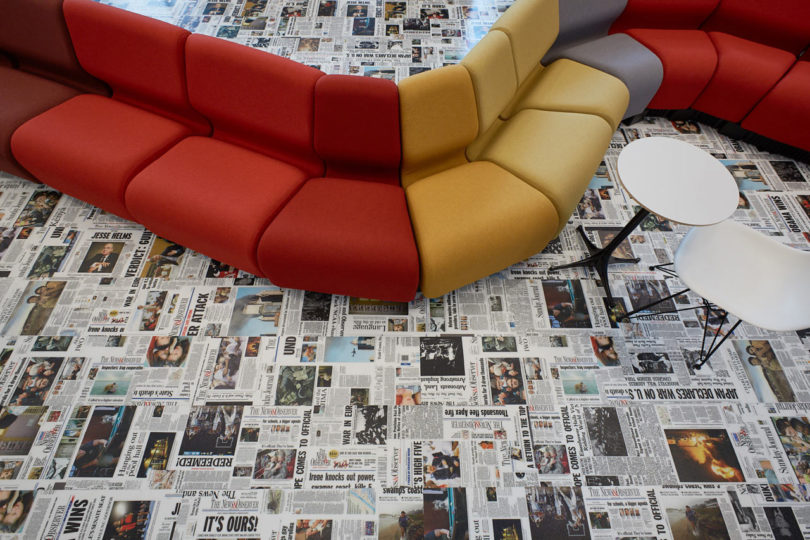
Offices for the Raleigh News & Observer were recently redesigned by iS Design, Raleigh. Among the space’s many wonderful features are the custom LVT planks that were digitally printed with front-page headlines from the last several decades. Photo credit: photographie:fourseven®
But Neoculture can’t just be applied the same way for every place or situation. Chris explained that “it has be reflective of each individual city’s needs to serve their specific population.” While the world feels smaller because of the Internet and global economy, we’re very hyperlocal, so “architects and designers are going to be tasked with figuring out reasons people should put down roots in a specific location,” he says. People are being priced out of cities, and Chris believes Neoculture can begin to answer problems for both businesses and individuals trying to thrive in these times.
Seamless living and working and eating and buying is slowly taking over, Chris says. “Co-working space is predicted to grow at retail properties by a rate of 25 percent annually through 2023, according to a new report from Jones Lang LaSalle. We Work is now valued at $35 billion. People just really need a more seamless approach to work and family.” He believes that we can reimagine suburbs as new spaces for these coworking, retail and lifestyle projects: “Strip malls are being reinvented as co-working spaces. Retail experiences will offer a ‘store within a store,’ and include co-working space and great food vendors.” The future, according to Neoculture, may mean you can check all the things off your to-do list under one roof.

S9 Architecture’s Ponce City Market in Atlanta re-envisioned a former Sears, Roebuck & Co. distribution center as a vibrant community space and a model of urban redevelopment. Photo © S9 Architecture / Sarah Dorio
Chris introduced me to Industrious, a new player in the co-working industry that’s capitalizing on this idea. They’re a different kind of c-oworking vendor in that they have premium spaces, such as suites or offices, with shared amenities. “We’re going to see this concept play out in a variety of different ways as providers get creative and design their own ideas of what the perfect day at the office looks like. We’ll see the continuing redevelopment of cultural artifacts such as malls and strip malls that encouraged reckless consumption, into spaces that value experiential consumption,” Chris explains.

S9 Architecture’s Empire Stores. This mixed-use development reimagines a vacant, 19th century warehouse on the DUMBO waterfront as a contemporary creative workplace and community hub. Photo: © S9 Architecture / Patrick Donahue
At Tarkett, they’re already preparing for Neoculture. Chris says that it’s impacted their product design and development in that they’ve put product lifecycle front and center: “Tarkett has been moving toward providing the type of transparency that ILFI certifications bring to the market—we want to provide easier, healthier removal of products and make sure they can be taken back and recycled into new flooring. We’re continuously challenging ourselves to find solutions at every stage of the product lifecycle that can help our customers reduce their carbon footprint and decrease their use of hazardous materials.”

Pentagonals rubber tiles were inspired by one of the world’s most intriguing geometric puzzles—searching for five-sided shapes that tile the plane and minimize installation waste. In the last century, only 15 such pentagons have been discovered, and Tarkett has selected three of them to debut in this new rubber flooring collection.
A focus on wellness has also motivated Tarkett to make changes: “we’ve been developing a flooring portfolio that solves virtually every installation and maintenance problem, especially high-moisture substrates, since that’s both an issue for installers and a threat to our health as end users in the space. We’re increasing our offering of Asthma & Allergy Friendly certified products and continuing to focus on providing the industry’s lowest TVOC emissions from our materials. We were the first flooring company to have products that are Living Product Challenge, Cradle to Cradle, and Asthma & Allergy Friendly certified,” Chris explains.
He also says they’re moving closer to closed loop manufacturing. “Our rubber plant is operating on 97% recycled water and 100% renewable electricity, which makes it even more exciting to show people how we’re elevating the design aesthetic of rubber tile. We want to understand our customers’ sustainability goals and help them achieve those. We’ve always believed you can have both responsible design and wonderful aesthetic in the same product. True innovation is when we don’t have to compromise either one.”

The Tailored Twist Collection offers a complete wardrobe for the floor with four patterns, nine colorways and endless inspiration. It’s available on Tarkett’s ethos® with Omnicoat Technology™, a non-PVC backing made of film from recycled windshields that virtually eliminates adverse substrate issues.
Where are you seeing Neoculture in your city or town? Are you implementing any of these MegaTrends into your product development? Share your comments below.
